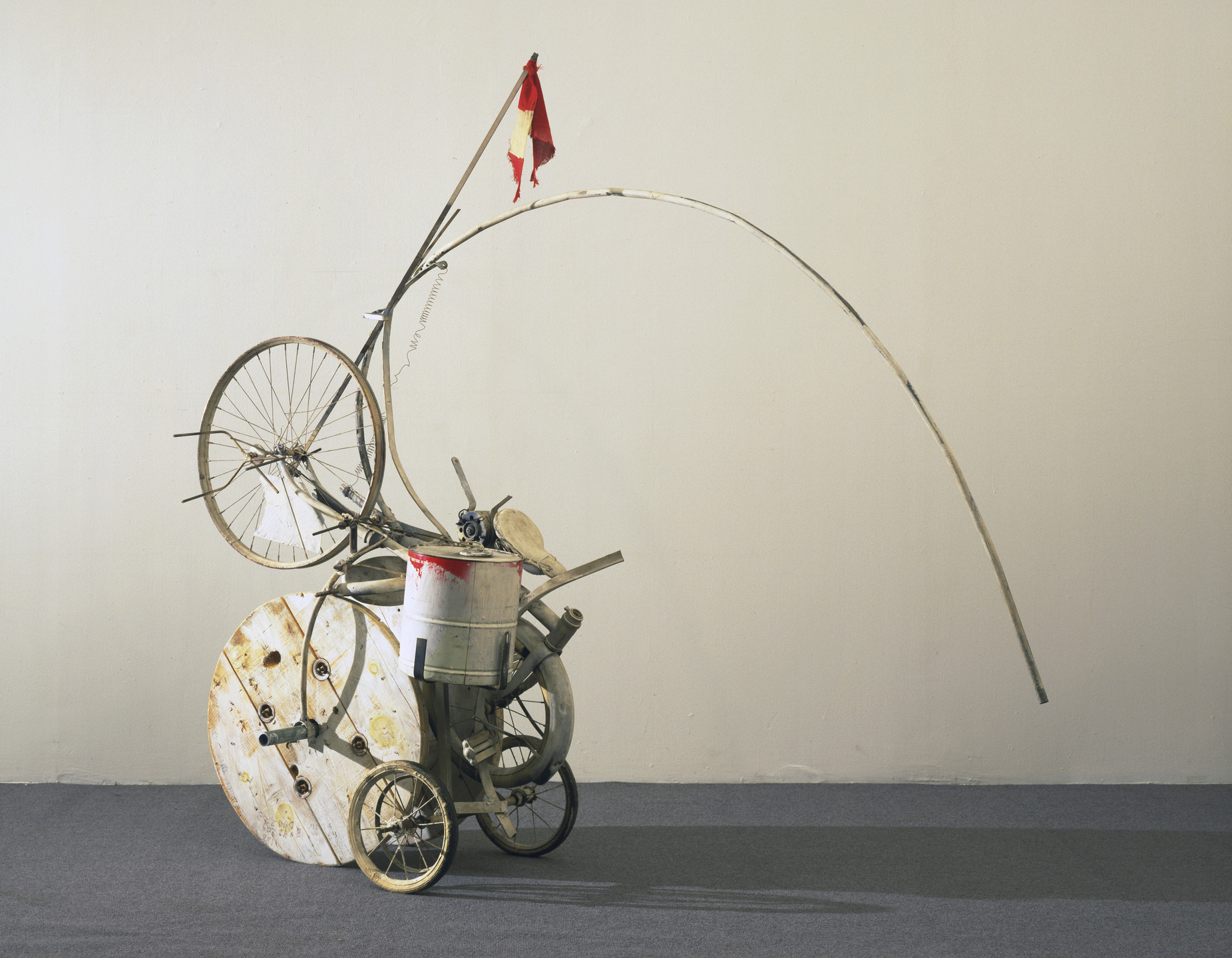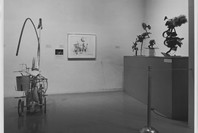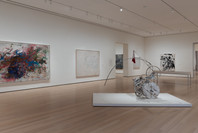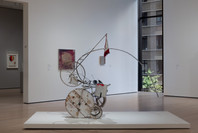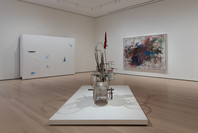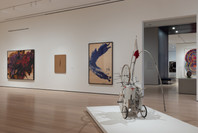This is a piece of Tinguely’s “self-constructing and self-destroying work of art,” an enormous kinetic sculpture composed of bicycle wheels, motors, a player piano, a go-cart, a bathtub, and other found objects. The machine was set in motion on March 18, 1960, before an audience in MoMA’s Sculpture Garden. During its brief operation, a balloon inflated and burst, colored smoke was discharged, paintings were made and destroyed, and bottles crashed to the ground. The piano, metal drums, and recorded voices provided the soundtrack to the machine’s destruction. “The work had to pass by, make people dream and talk, and that would be all,” the artist commented, “the next day nothing would be left.”
Gallery label from 2023
Best known for his production of sculptural machines, Swiss artist Jean Tinguely exhibited mechanical works such as this one in the groundbreaking 1955 exhibition Le Mouvement at the Galerie Denise René in Paris. In the film projected on this wall, artist Robert Breer captured these works in motion. Le Mouvement revealed that an international and multigenerational constellation of artists were using motion to grapple with a changing modern world. “In our time,” Tinguely observes, “industry and automation dominate us and impose a rhythm on us. . . . [M]y work must move to remain vital, to avoid obsolescence.”
Gallery label from Sur moderno: Journeys of Abstraction—The Patricia Phelps de Cisneros Gift, October 21, 2019–March 14, 2020
